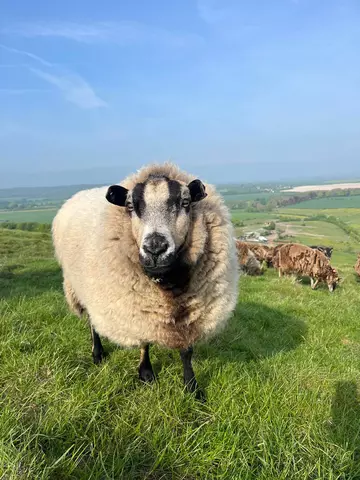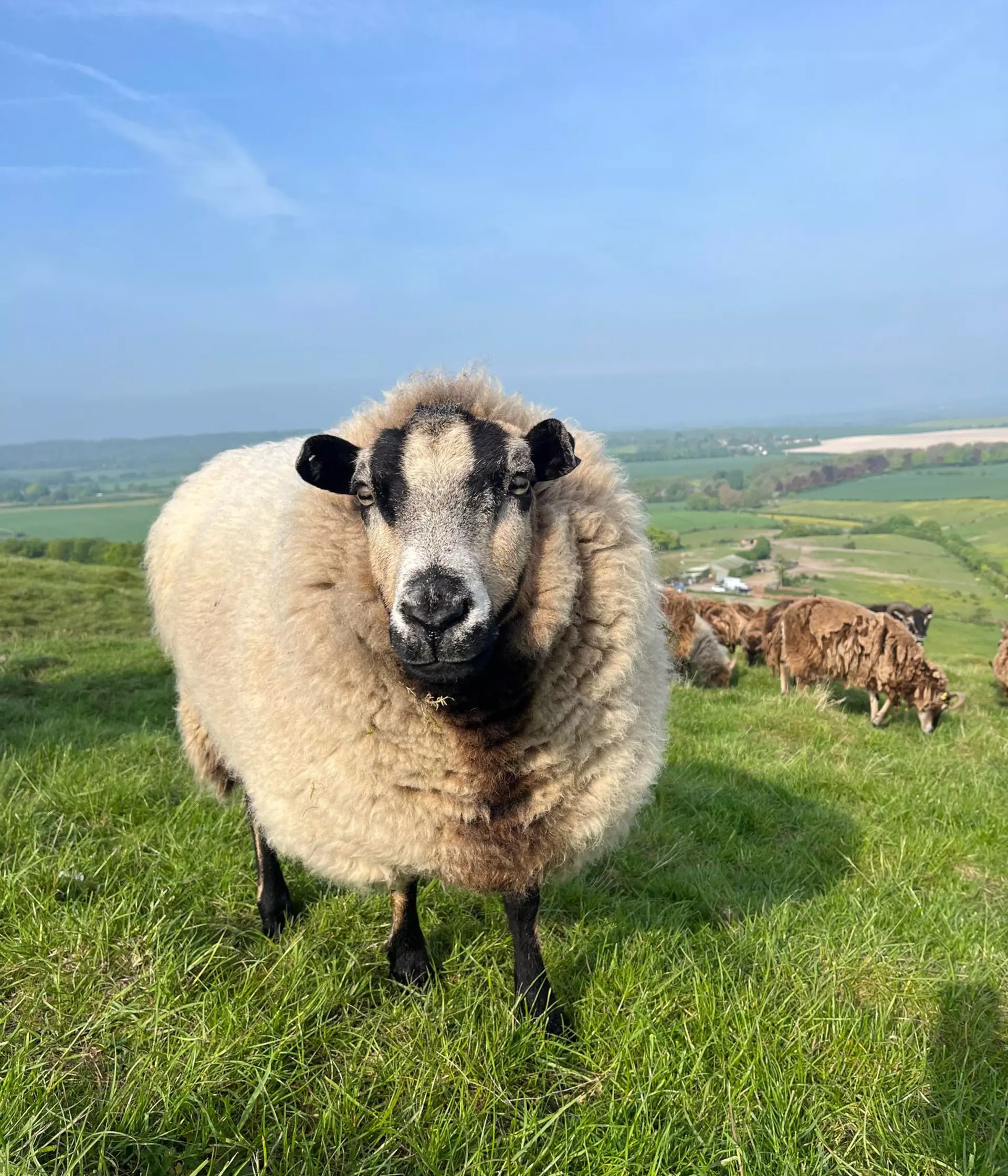
About our Badger face sheep
Our flock or Badger face sheep roam the chalk downs grassland here at Whipsnade Zoo. The grasslands are a designated Site of Special Scientific Interest (SSSI), the sheep grazing the area helps to maintain and balance the biodiversity of the habitat.

Badger face sheep facts
- Original ancestors of the Badger face sheep can be traced back as far as the 7th century!
- Badger face sheep fleece is lovely and soft making it great for spinning and weaving.
What do Badger face sheep look like?
Badger face sheep come in two distinct colour and marking patterns. The first colour pattern is Torddu where the sheep are mostly white with a black underbelly stripe all the way from their tail to their chin and then black stripes either side of their eyes. Their name comes from these badger like markings. The second colour pattern is Torwen which is the opposite of Torddu and slightly smaller eye stripes. Females are usually polled (hornless) but the males typically have impressive curled horns.
What do badger face sheep eat?
Badger face sheep are grazers, their diet consists mainly of grasses, herbs and other plants they find on mountain slopes and pastures.
Where are Badger face sheep from?
Badger face sheep are a breed of Welsh mountain sheep. In the wild they are happy living in upland areas and can easily get around steep hills and rough terrain.
Visit the chalk down grasslands on your next trip to Whipsnade Zoo to learn more about our flock of sheep and how they are helping to maintain and balance the native ecosystem.
